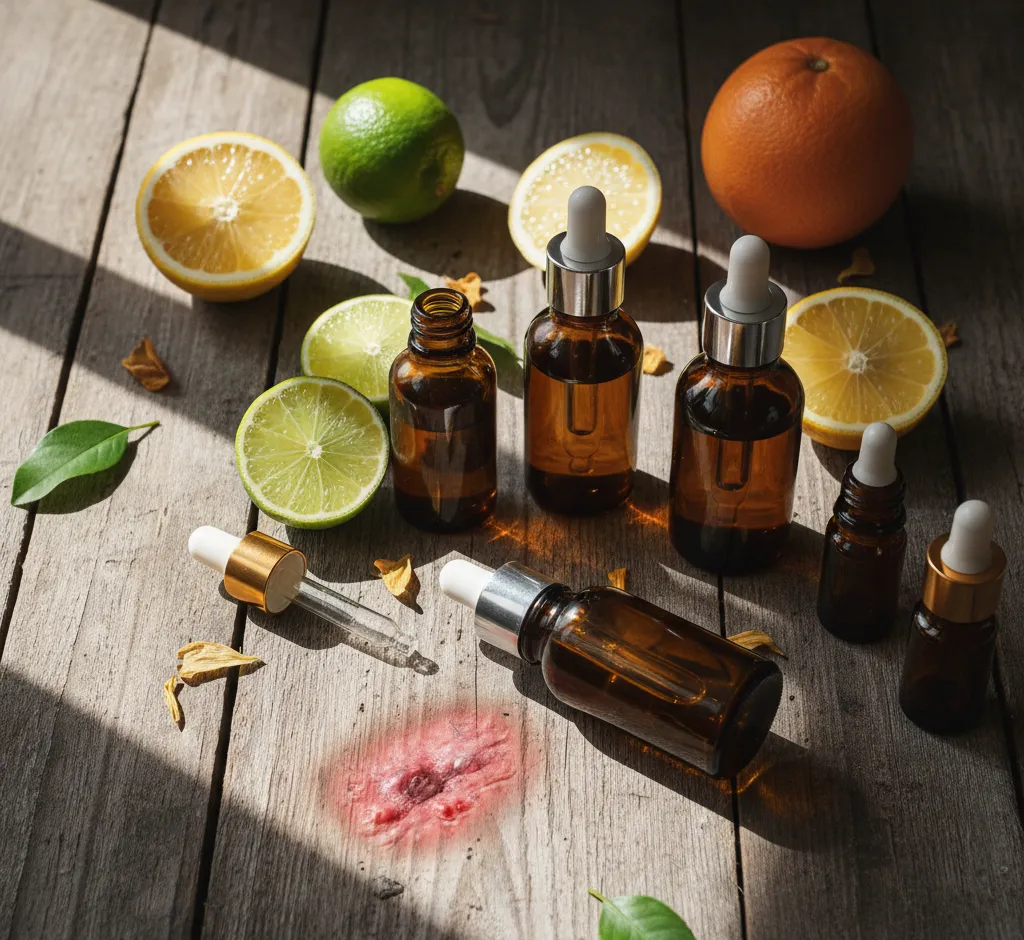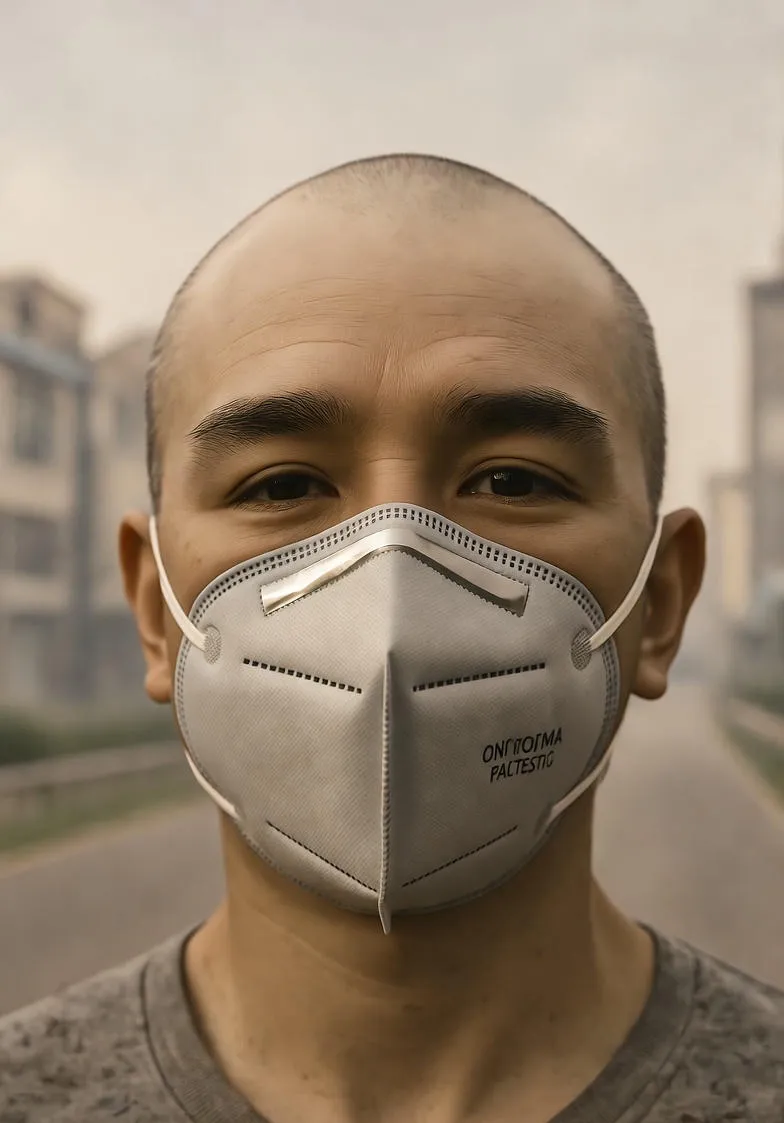Sun Sensitivity Secrets: A Deep Dive into Essential Oil Phototoxicity Risks
Discover the hidden dangers of essential oil phototoxicity. Learn which citrus and non-citrus oils contain high levels of furocoumarins (like bergapten) and how to safely use them, including required dilution and the crucial 18-hour sun-avoidance rule.

Understanding Phototoxicity: A Chemical Reaction on the Skin
Essential oils (EOs) are concentrated extracts from plants, widely used in aromatherapy, perfumery, and natural health products. While their benefits are numerous, a critical and often overlooked risk is **phototoxicity**. Phototoxicity is a type of skin irritation that occurs when certain chemical compounds in the essential oil absorb UV radiation (typically from the sun or tanning beds) and transfer that energy to biological molecules in the skin, causing damage.
This reaction is distinct from a typical allergic reaction (contact dermatitis) because it requires both the chemical presence on the skin and subsequent UV exposure. The resulting damage is akin to a severe, localized sunburn, often manifesting as redness, blistering, burning, swelling, and hyperpigmentation (dark spots) in the area where the oil was applied.
The Chemistry Behind the Burn: Furocoumarins
The primary culprits responsible for the phototoxic potential in essential oils are a class of natural chemical compounds known as **furocoumarins**, particularly **psoralen**, **bergapten** (5-methoxypsoralen), and **xanthotoxin** (8-methoxypsoralen). These molecules are planar and can intercalate into the DNA helix. Upon activation by UV light (specifically UVA radiation, $320-400 \text{ nm}$), they become highly reactive.
- Mechanism of Action: Furocoumarins absorb a photon of UVA light, reaching an excited state. This excited state allows them to bind covalently to pyrimidine bases in the DNA, forming photo-adducts. This DNA damage is what triggers the inflammatory, burn-like phototoxic reaction.
- Key Offenders: The concentration of furocoumarins dictates the phototoxicity risk. Citrus oils, especially those derived from the peel via **cold-pressing** (expression), are notorious for high furocoumarin levels.
The List of High-Risk Phototoxic Essential Oils
It is crucial for consumers and practitioners to be aware of the most common and potent phototoxic essential oils. This list is not exhaustive, but covers the most significant risks:
(Note: In the final article, this figure would contain a detailed table listing oils like Bergamot, Lime, Lemon, Grapefruit, and Bitter Orange, alongside their specific Safe Maximum Use Concentrations, typically expressed as a percentage, e.g., Bergamot (expressed) $\le 0.4\%$ in leave-on products.)
Citrus Oils: The Primary Concern
- Bergamot (Citrus bergamia): The highest risk oil due to its high bergapten content. Even low concentrations can be problematic.
- Lime (Citrus aurantifolia) (Expressed/Cold-Pressed): High risk. The steam-distilled version is generally considered safe.
- Lemon (Citrus limon) (Expressed/Cold-Pressed): High risk. The steam-distilled version is generally considered safe.
- Grapefruit (Citrus paradisi): Moderate risk compared to Bergamot, but still requires caution.
- Bitter Orange (Citrus aurantium): Contains phototoxic components.
Non-Citrus Phototoxic Oils
While citrus oils are the most common, phototoxicity is not exclusive to this family. Other botanicals can contain furocoumarins or similar phototoxic agents:
- Cumin (Cuminum cyminum): Extremely high risk due to high furocoumarin levels; requires very low dilution.
- Angelica Root (Angelica archangelica): Also contains significant phototoxic compounds.
Mitigation Strategies: Using Essential Oils Safely
The risk of phototoxicity is manageable through careful application and formulation. The following strategies are essential for safe use:
1. The Distinction Between Distilled and Expressed Oils
The extraction method is a key factor in determining risk:
- Cold-Pressed/Expressed Oils: These oils (e.g., Bergamot FCF) are made by pressing the peel, which transfers the high concentration of non-volatile furocoumarins into the oil. **These are the phototoxic oils.**
- Steam-Distilled Oils: The steam distillation process, which uses heat, leaves the heavier, non-volatile furocoumarin molecules behind in the plant material/hydrosol. **The resulting distilled oil is generally considered non-phototoxic.** For example, distilled Lime EO is safe for sun exposure.
2. Safe Dilution and Maximum Use Concentrations
The most important safety measure is **dilution**. Reputable organizations, such as the International Fragrance Association (IFRA), provide guidelines for maximum safe concentrations in leave-on skin products. Using an oil above its recommended maximum can drastically increase the phototoxic risk.
(Detailed content would be inserted here, discussing the concept of 'Safe Maximum Dose' and how to calculate proper dilution percentages for different product types.)
3. 'Furocoumarin-Free' (FCF) Oils
Some companies offer **Furocoumarin-Free (FCF)** or **Bergaptene-Free** versions of highly phototoxic oils (most commonly Bergamot). These oils have undergone a second processing step (e.g., vacuum distillation or solvent extraction) to specifically remove the furocoumarin components, making them safe for use before sun exposure.
4. Application Method and Timing
Phototoxic risk applies primarily to **topical, leave-on applications**. The following rules must be strictly adhered to:
- Timing Rule: After applying a phototoxic essential oil to the skin, avoid sun exposure, including tanning beds, for a period of **12 to 18 hours**.
- Area Coverage: Even if the oil is applied to a small area, if that area is exposed to the sun, a reaction can occur.
- Wash-Off Products: Phototoxic oils used in wash-off products (e.g., soaps, shampoos) are generally considered safe because the furocoumarins are rinsed away before sun exposure.
- Internal and Inhalation Use: Ingestion and inhalation of essential oils do not carry a phototoxic risk to the skin.
Clinical Presentation and Long-Term Effects
Phototoxic reactions can vary in severity, but they are often more intense and longer-lasting than a typical sunburn.
The Acute Reaction
The reaction usually begins within minutes to hours of sun exposure after application, peaking at about 48 hours. Symptoms include:
- Severe Erythema (redness)
- Oedema (swelling)
- Vesicles and Bullae (blisters)
- Intense burning or stinging pain
These symptoms are medically classified as **Phytophotodermatitis** when they involve plant compounds. The reaction can be visually striking, often leaving a pattern on the skin that corresponds exactly to the application area, such as stripes from a massage or splashes from a perfume.
Post-Inflammatory Hyperpigmentation (PIH)
A significant long-term consequence of a severe phototoxic reaction is **Post-Inflammatory Hyperpigmentation (PIH)**. The trauma to the skin triggers an overproduction of melanin, resulting in dark brown or grey patches that can persist for months, or even years, after the initial burn has healed. This cosmetic issue is particularly frustrating for individuals who turned to essential oils for skin benefits.
The Role of Awareness and Professional Standards
Education is the best defense against phototoxicity. Consumers must read product labels carefully, look for the 'distilled' or 'FCF' designation for citrus oils, and follow all dilution guidelines.
For professional aromatherapists, a thorough understanding of the chemistry and IFRA safety data is non-negotiable. Practitioners must conduct a comprehensive client intake to assess their sun exposure habits, use of tanning beds, and pre-existing skin conditions before recommending any phototoxic oil for topical use.
In summary, essential oils offer powerful therapeutic benefits, but the photochemical risk presented by furocoumarins cannot be ignored. By respecting the maximum safe use limits, choosing distilled or FCF options, and observing the 12-18 hour sun-avoidance window, users can harness the power of these potent botanicals without risking painful and lasting skin damage.


